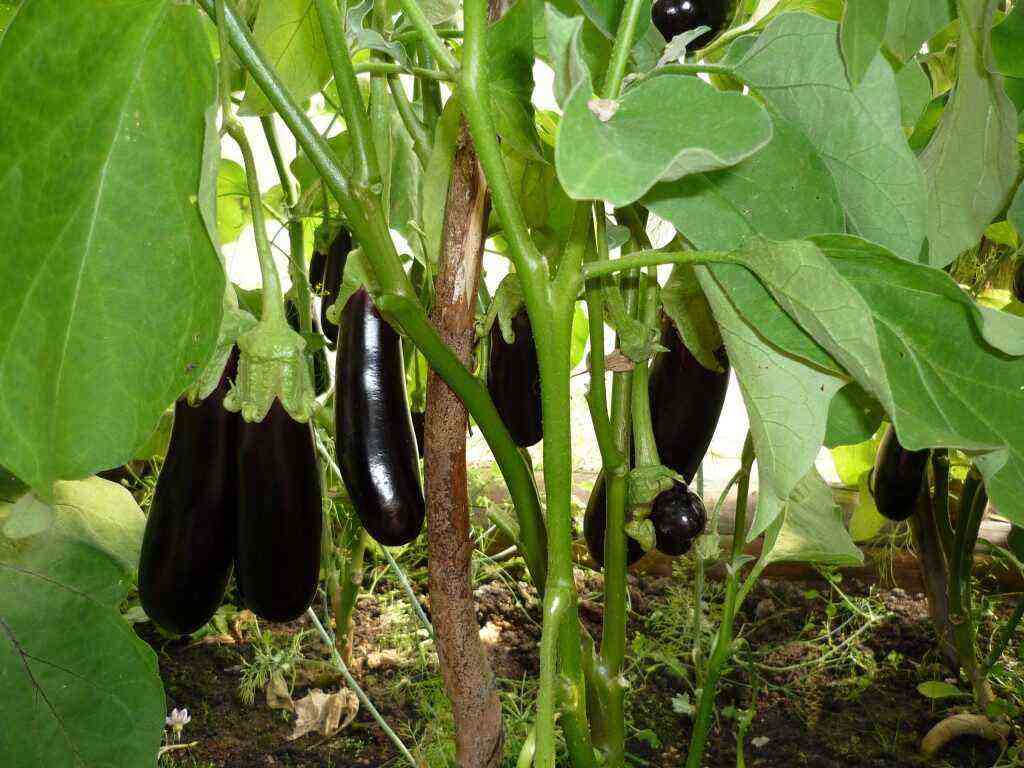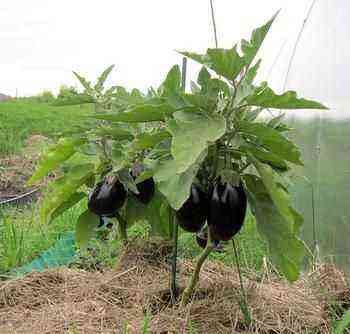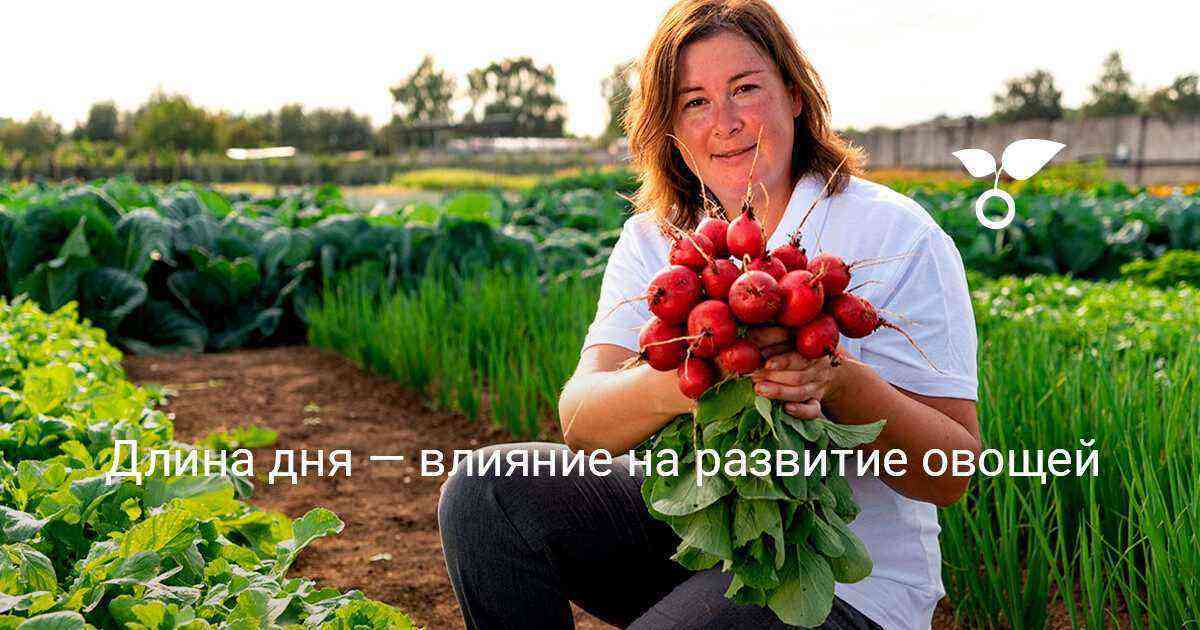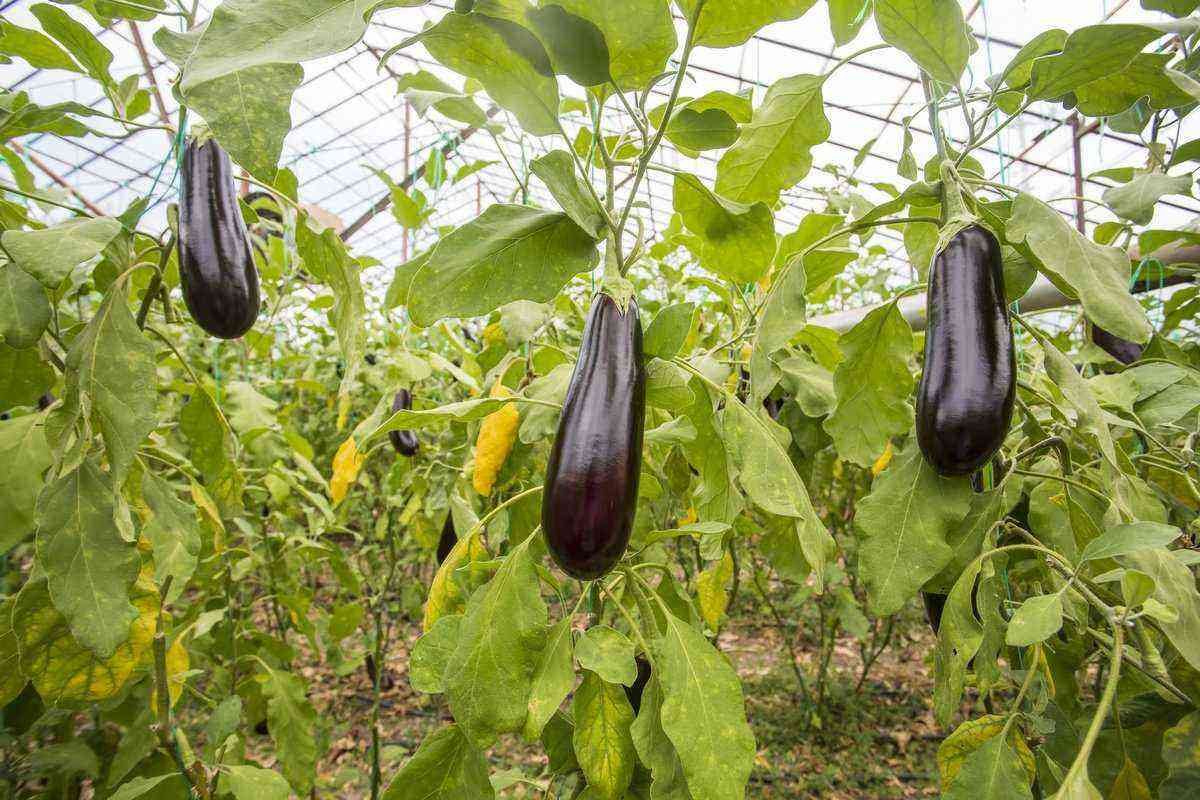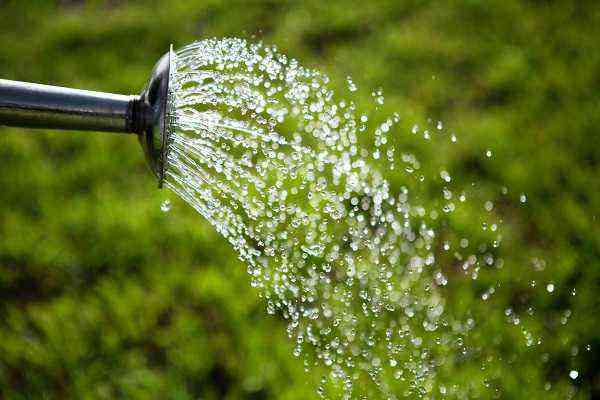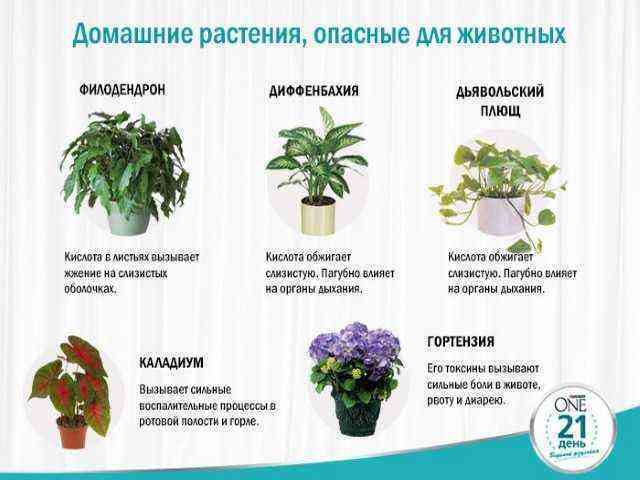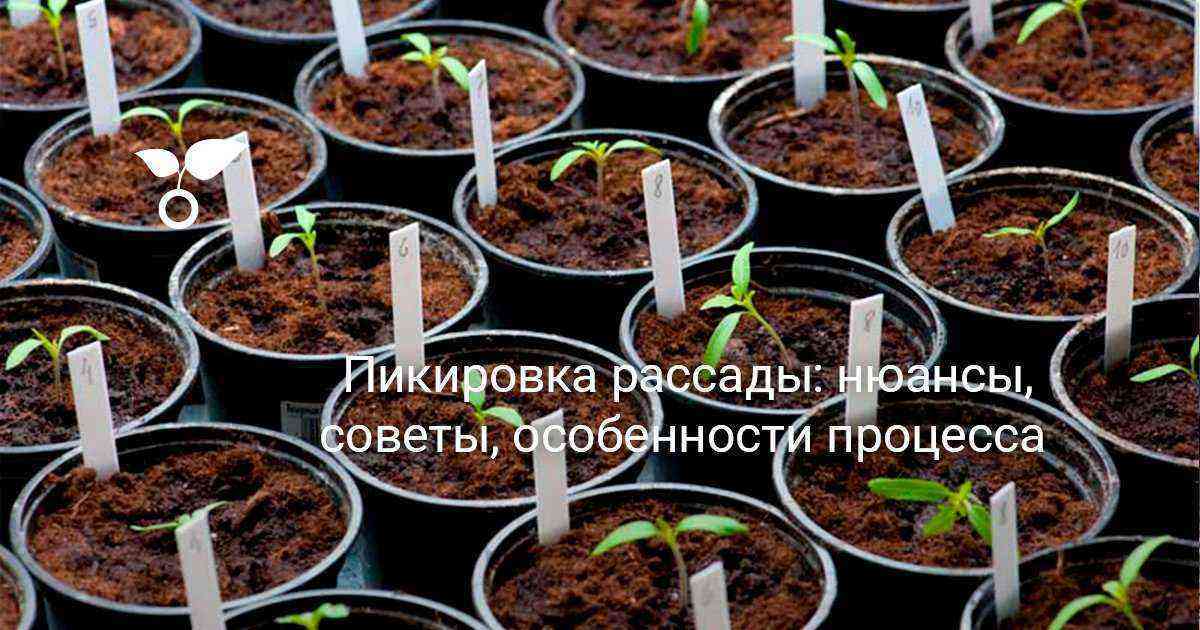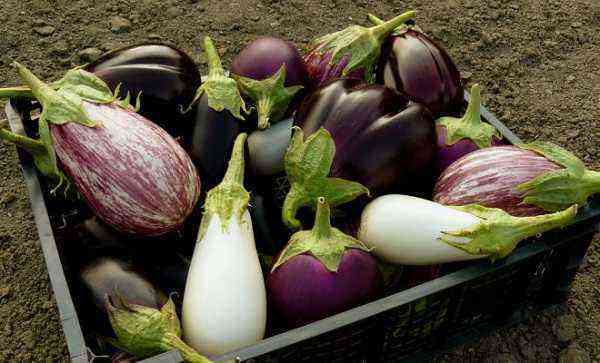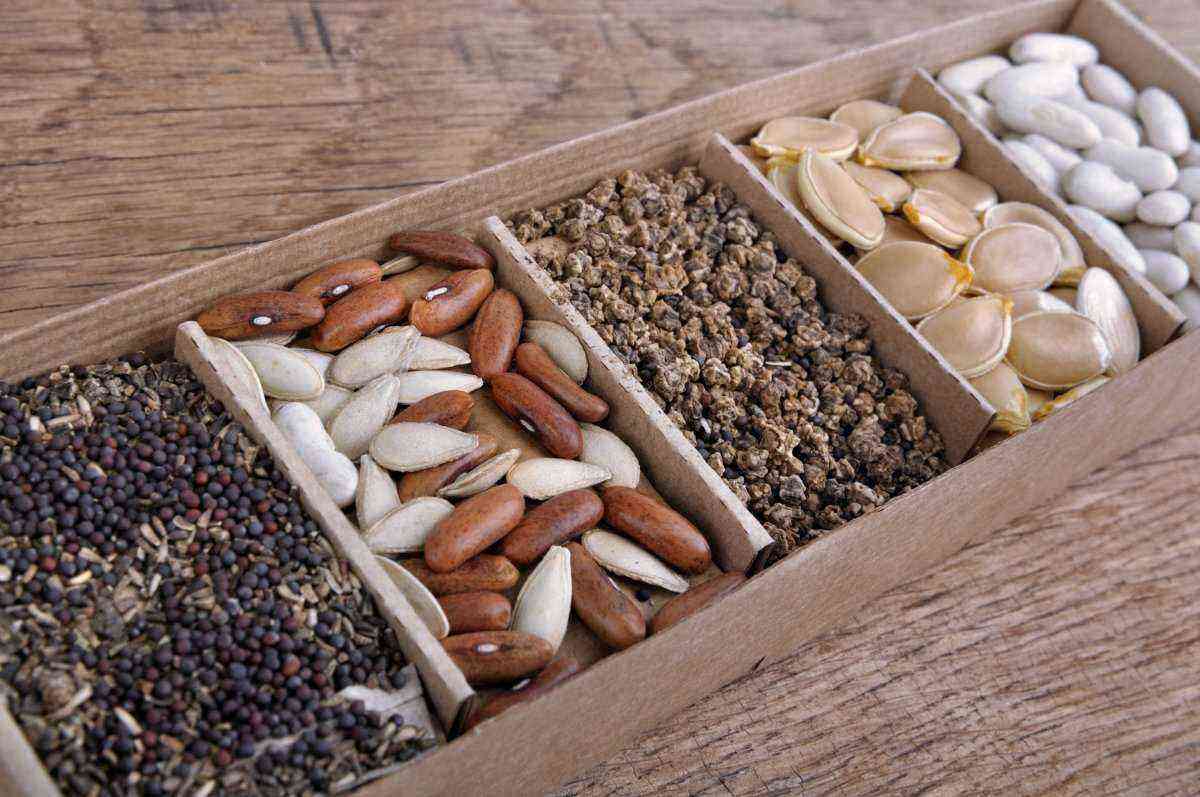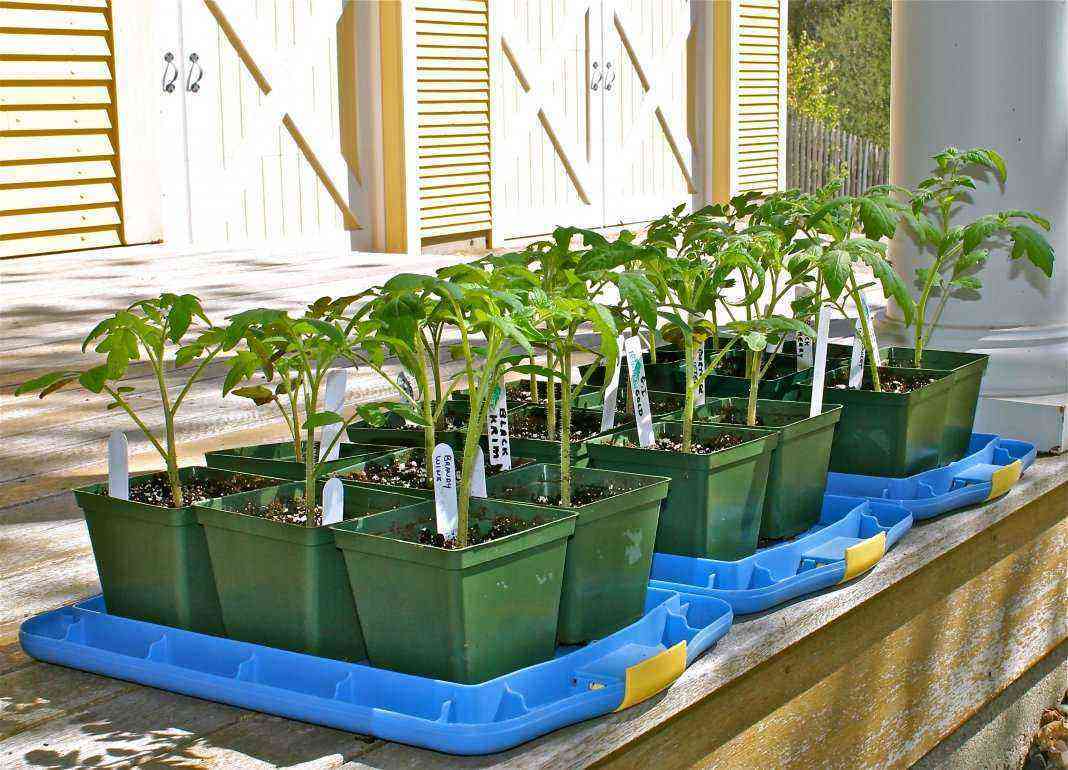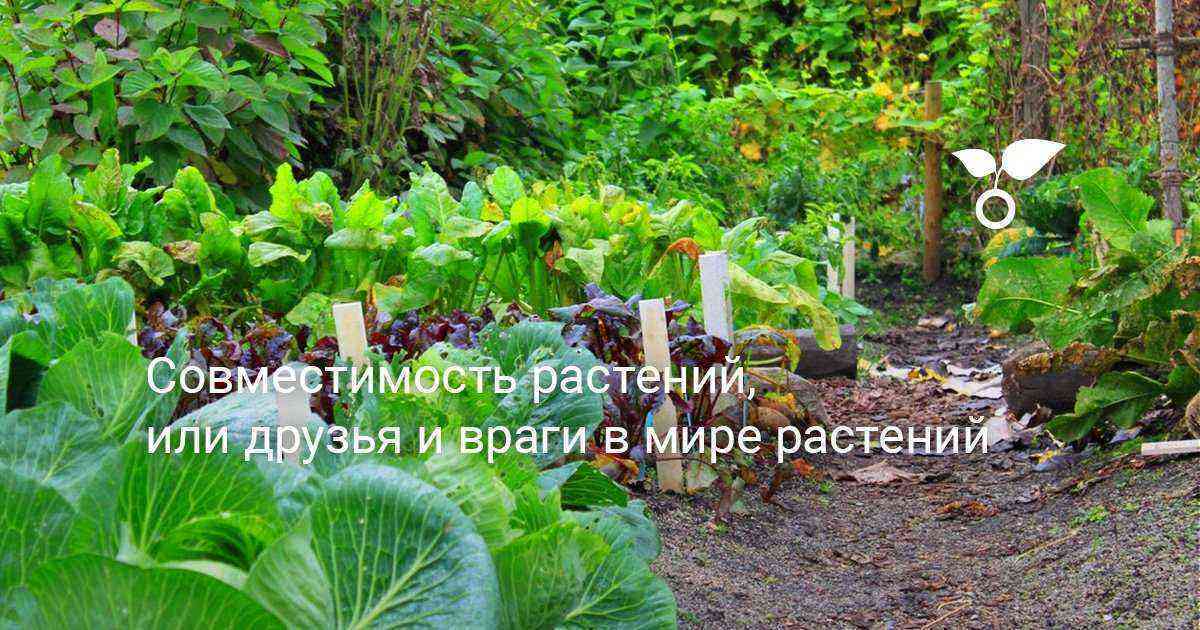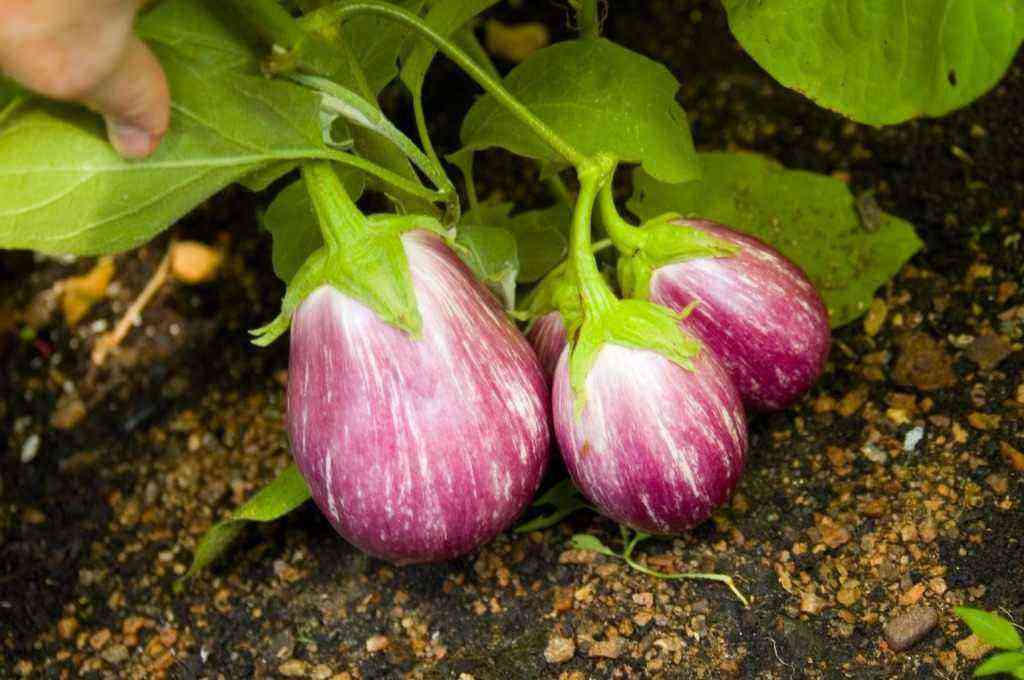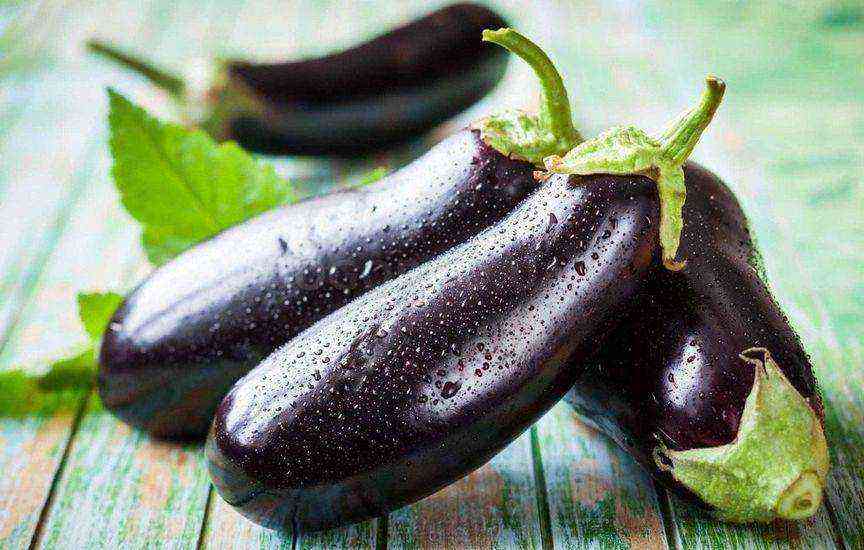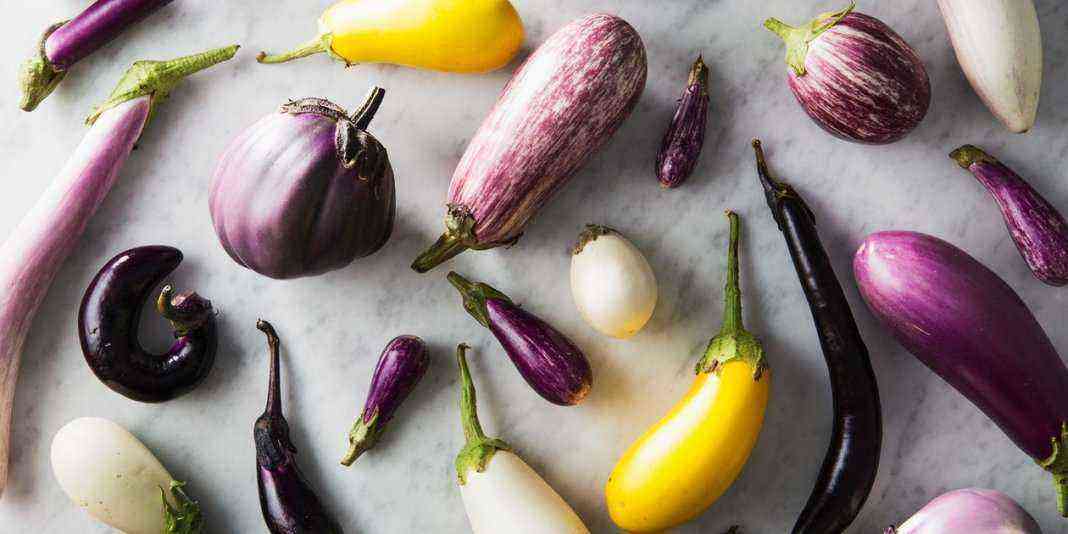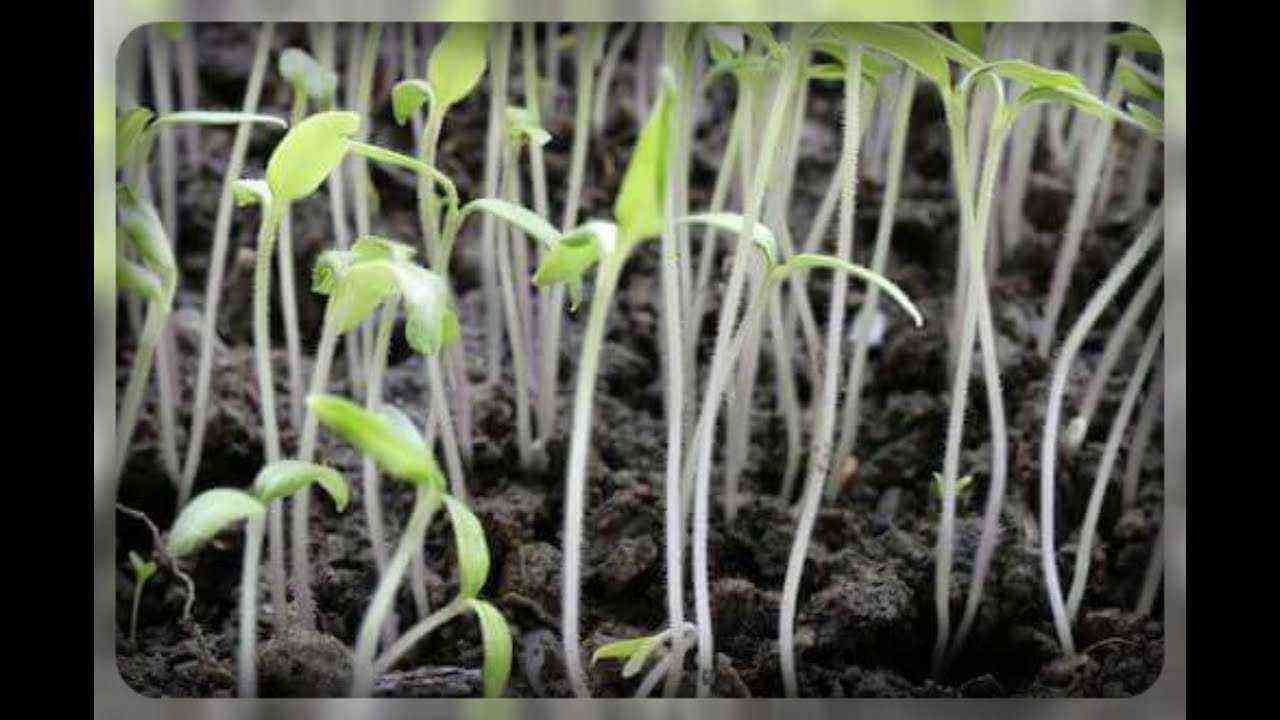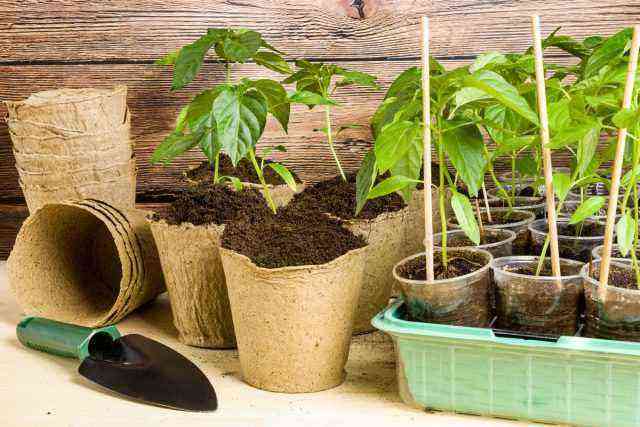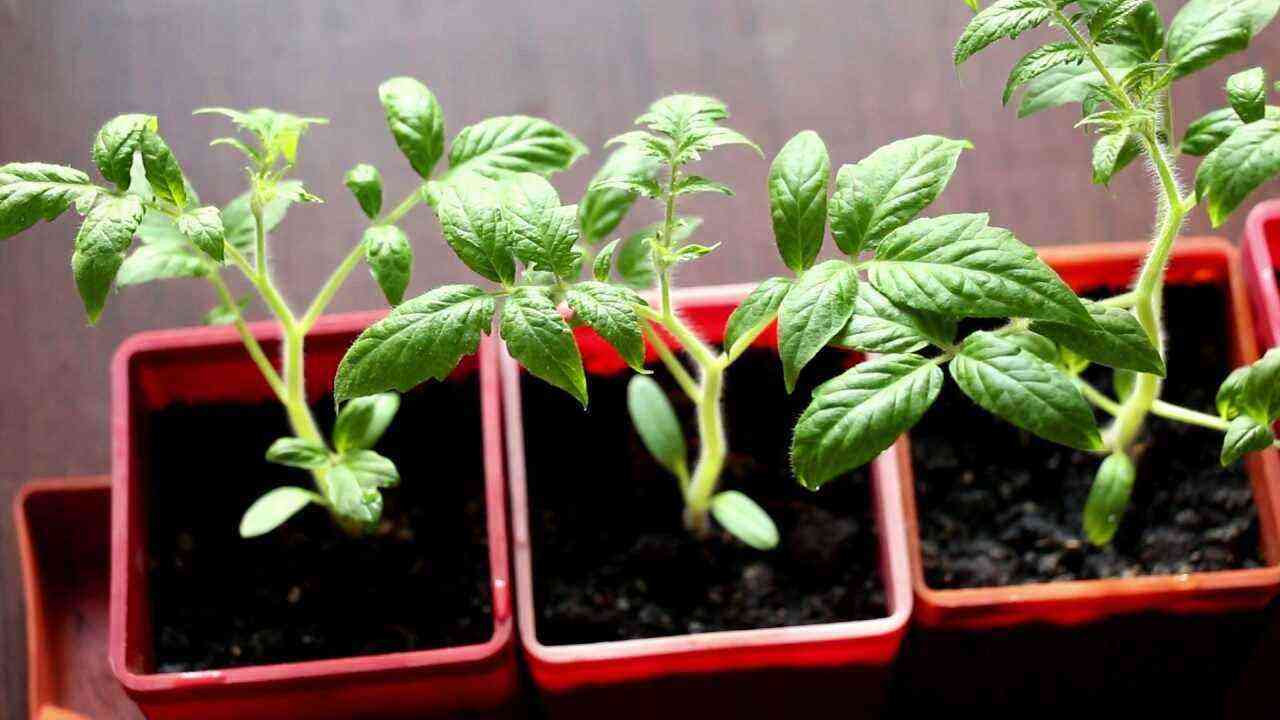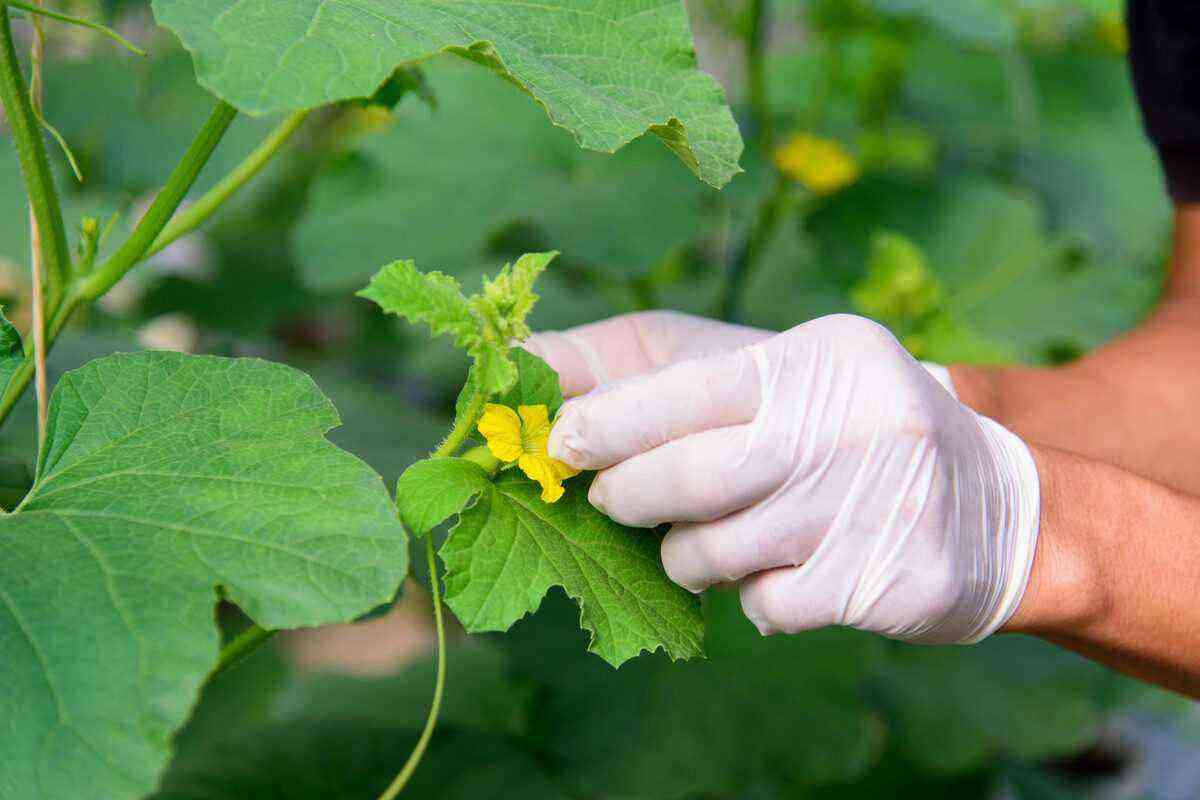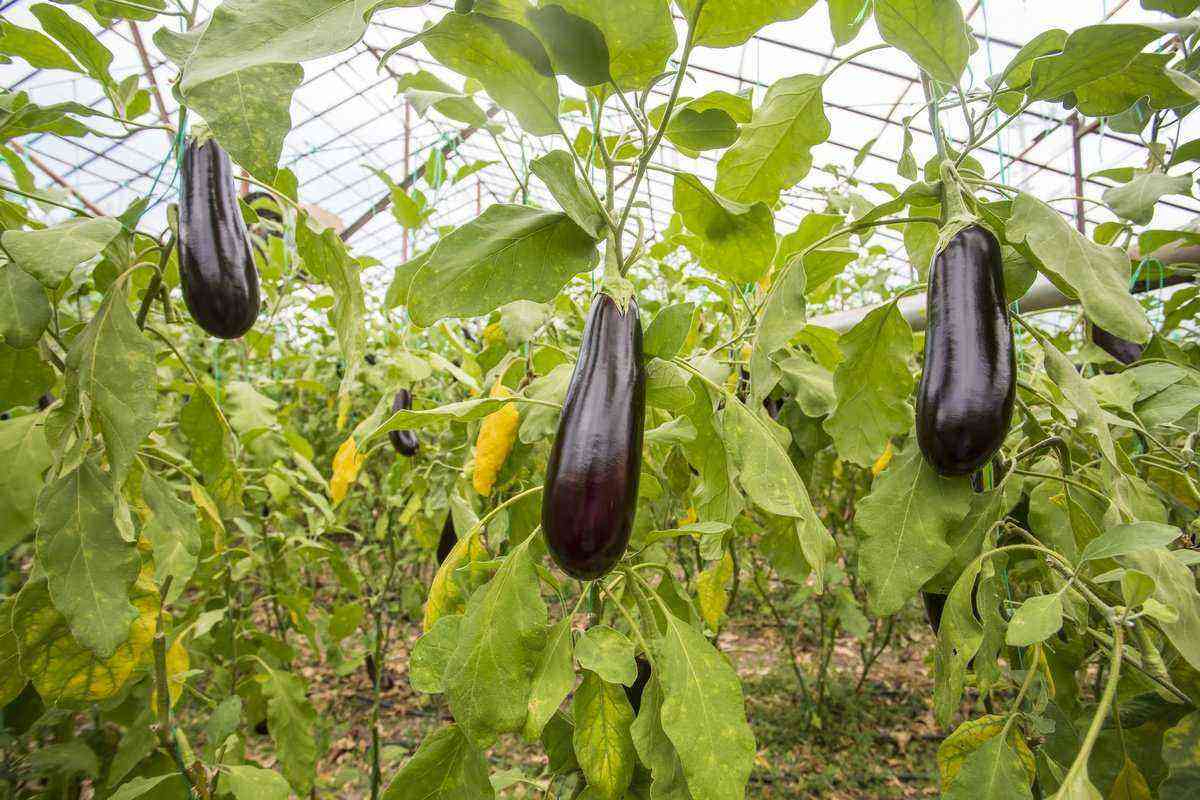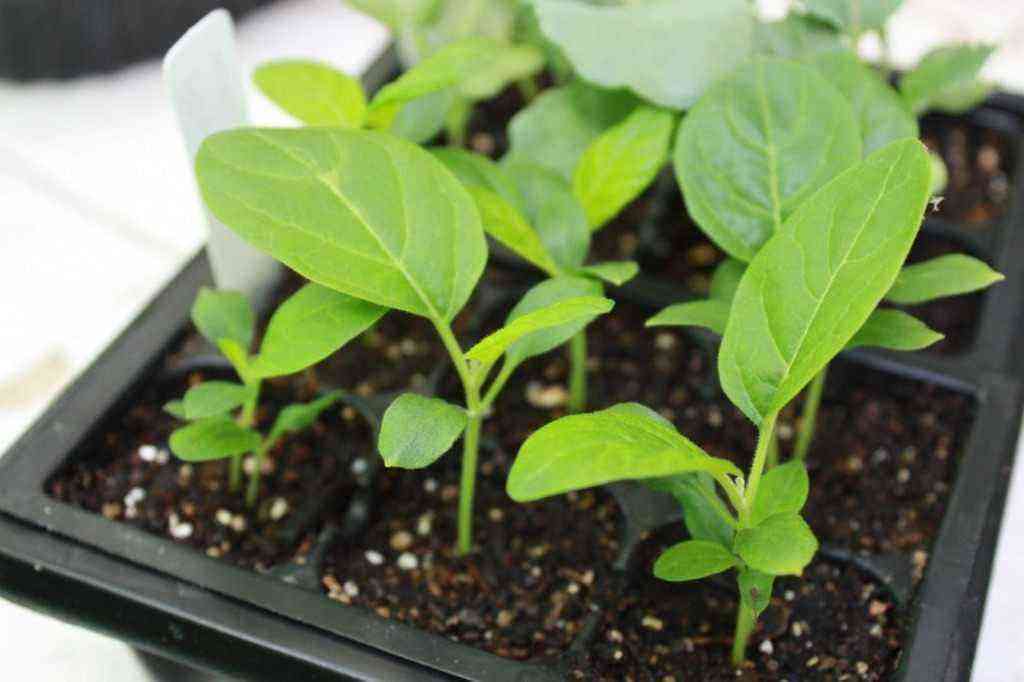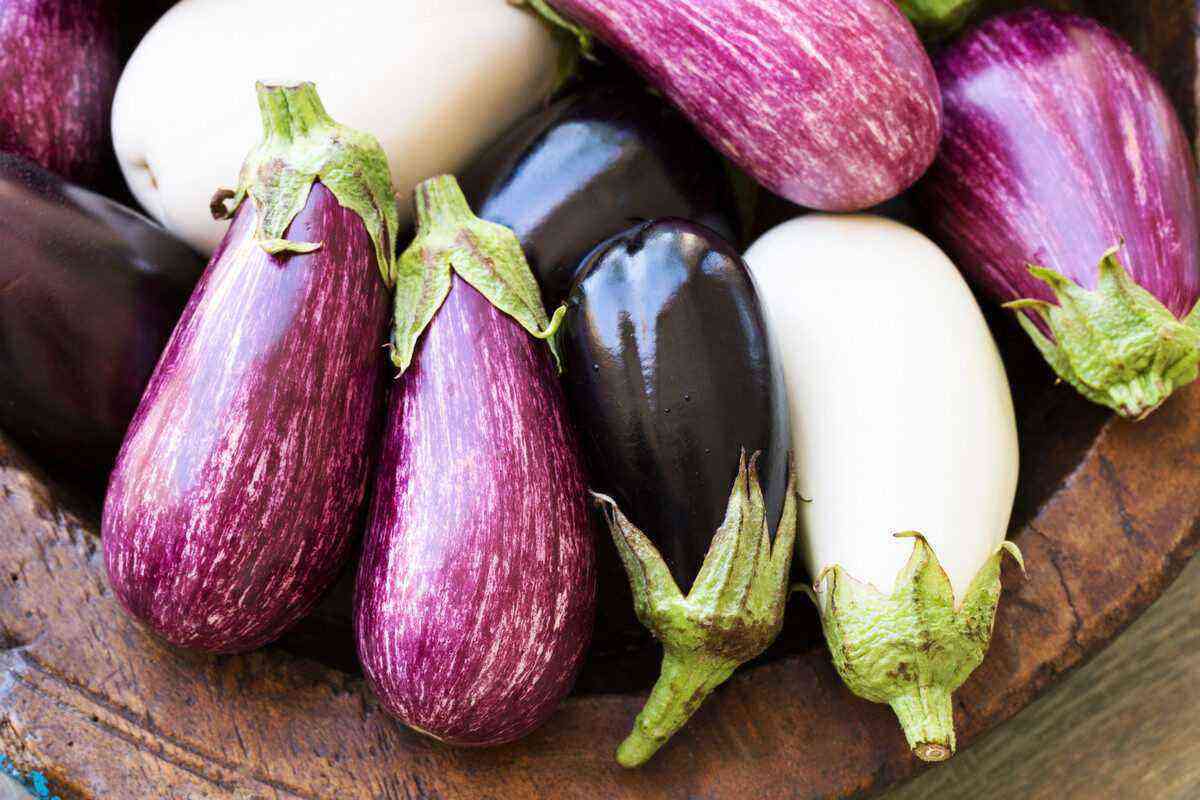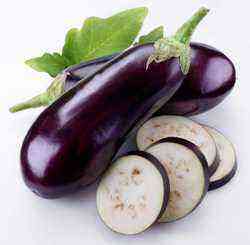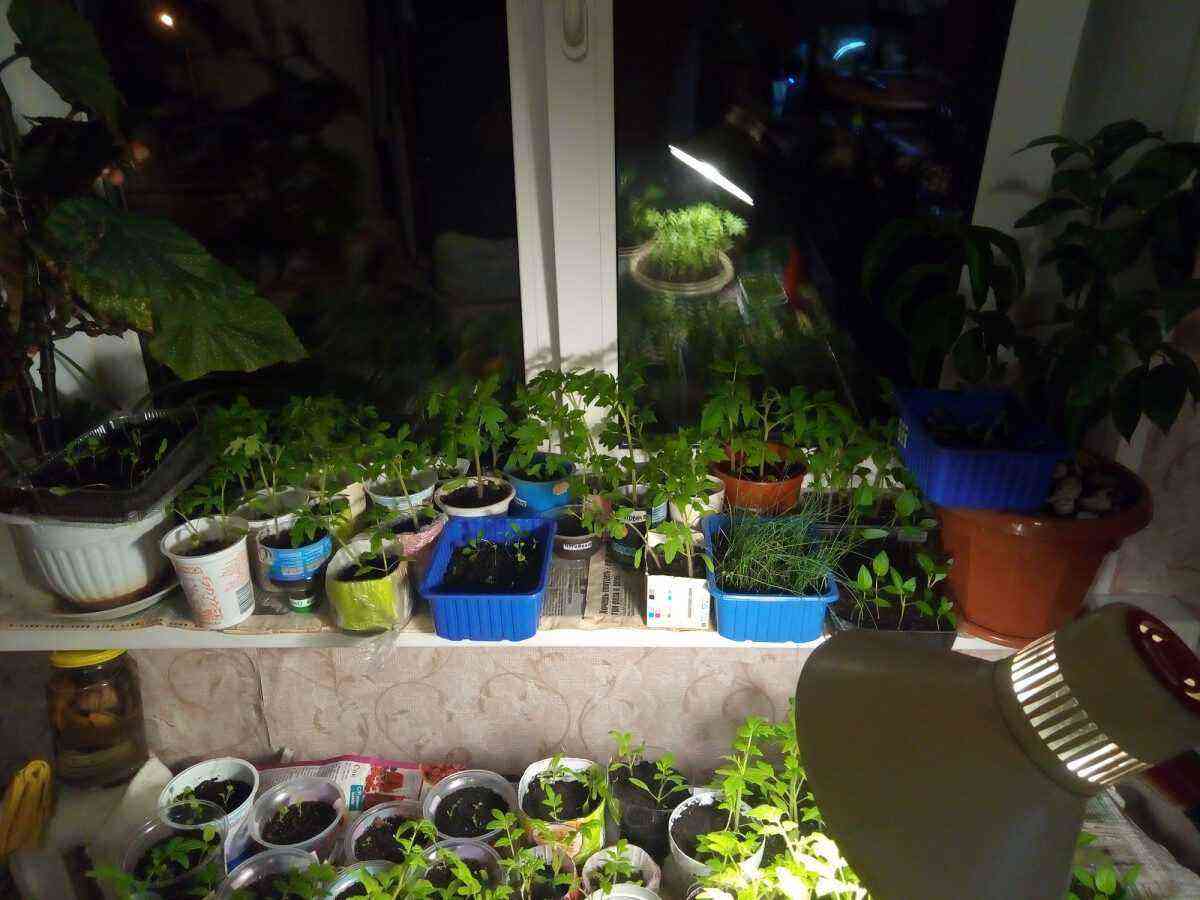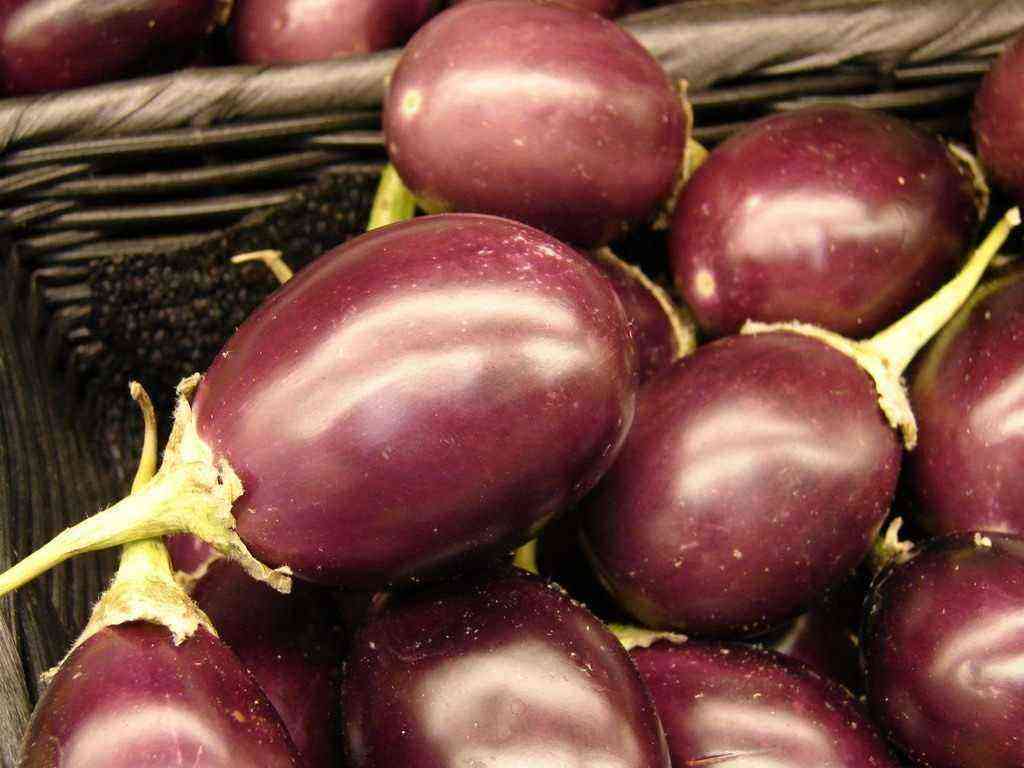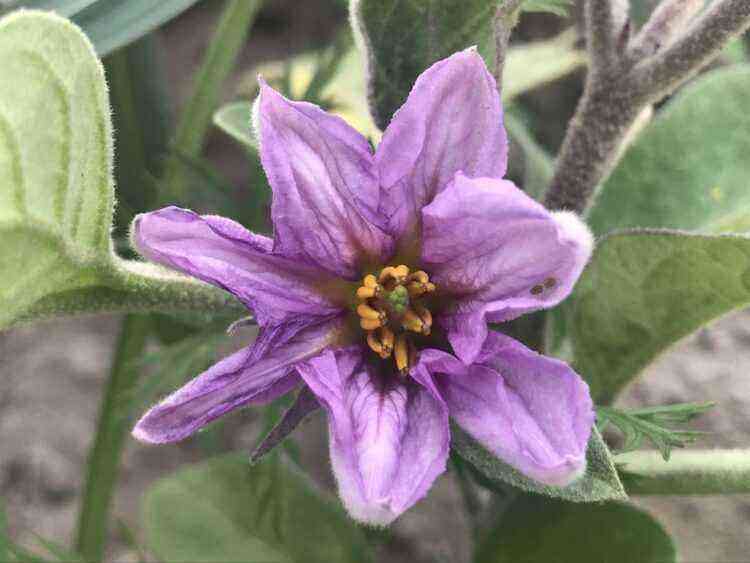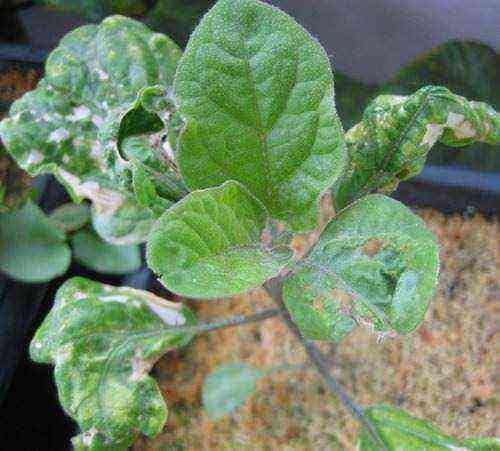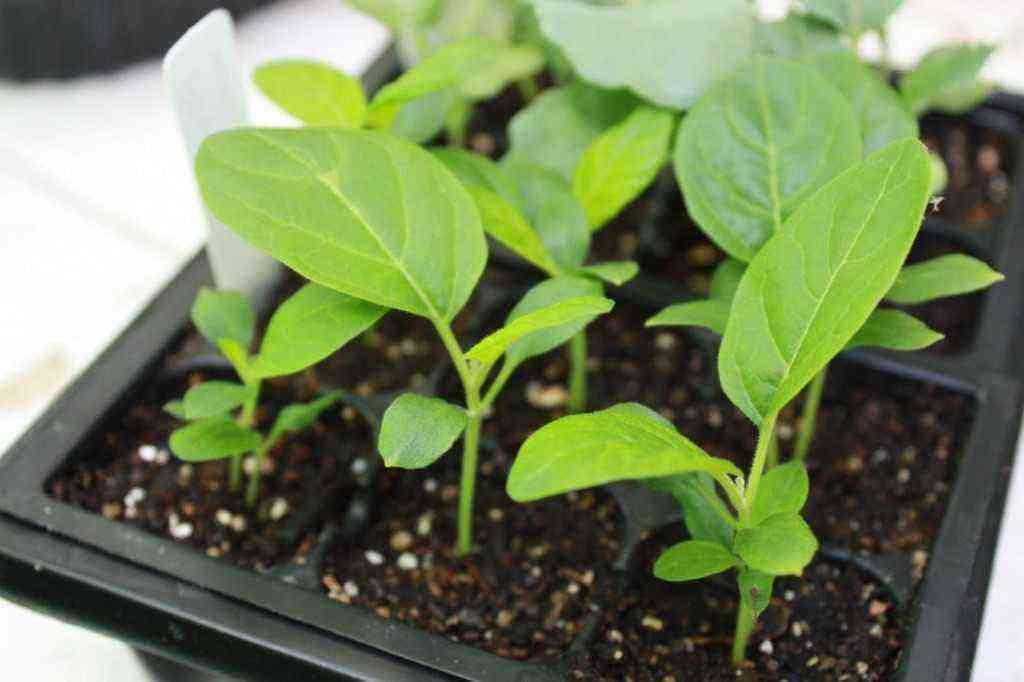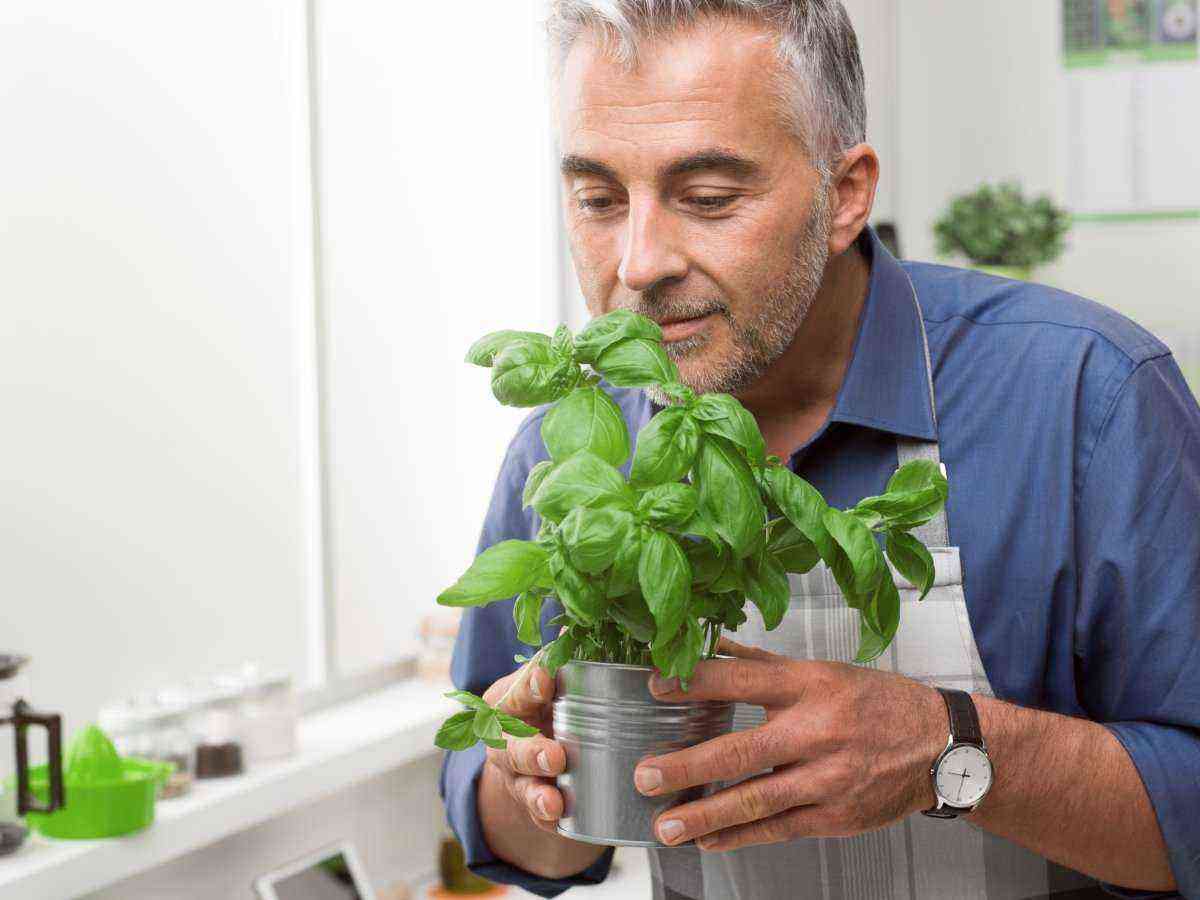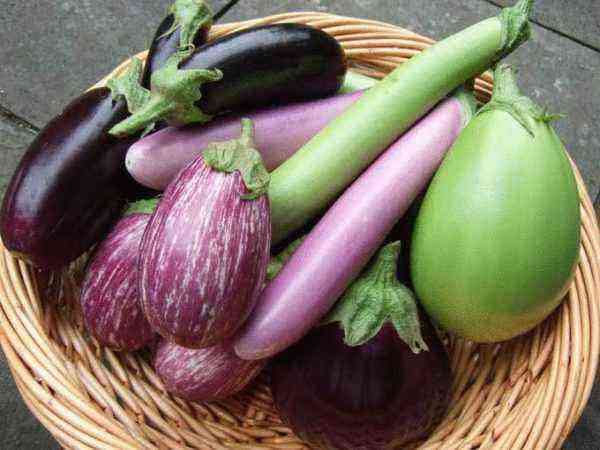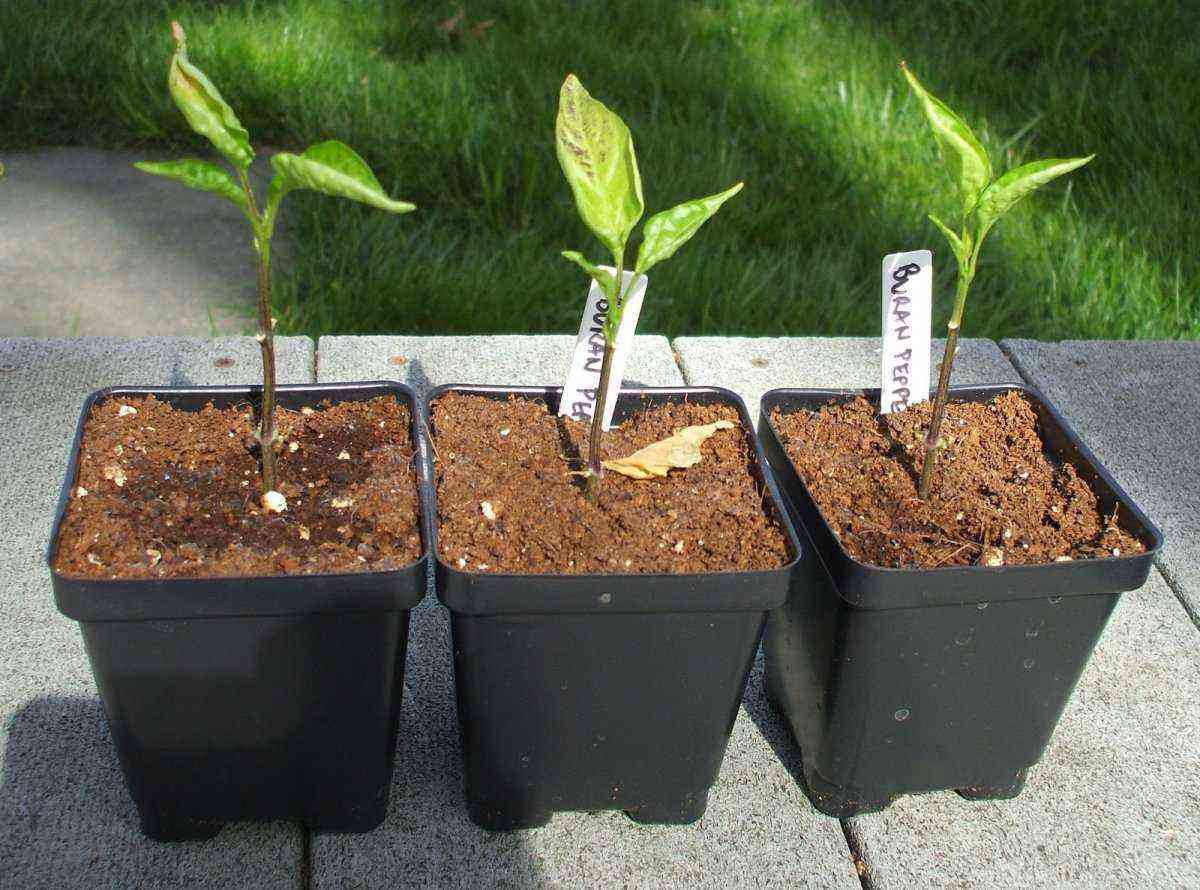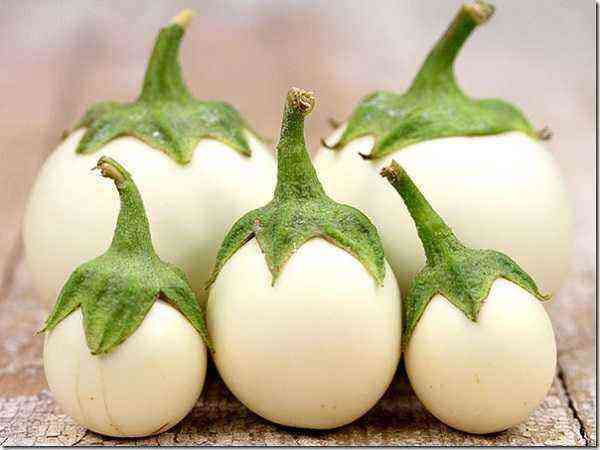Winter rolled downhill. Spring persistently knocks on the door, reminds: it’s time to prepare for sowing seedlings. Growing seedlings provides a good start for southern heat-loving vegetable crops that do not tolerate low temperatures. Planting grown seedlings in open or protected ground allows you to grow an ultra-early and early harvest in the south, get a ripe crop when planted in open ground in cold regions, where the autumn cold begins already in August and the fruits of vegetable crops with a long growing season do not have time to ripen. All preliminary work, sowing and caring for seedlings are almost the same, but still growing it is a complex process that requires attention, accuracy and patience. Violation of plant requirements for growth and development conditions entails a chain of problems that require immediate solutions.
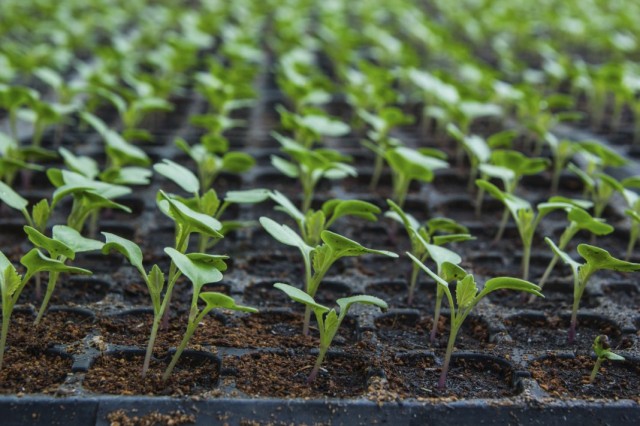 Seedling of cabbage. © doidam10
Seedling of cabbage. © doidam10
To grow healthy seedlings, it is important not to make mistakes, and if they happen, to quickly find the right solution. The article proposes to get acquainted with the main problems that occur in the process of growing seedlings, and methods for solving them.
Contents:
1. Seeds did not germinate, single seedlings were obtained
For what reason did this happen?
The reason may be poor-quality seed. Seeds have reduced germination energy and seedling friendliness. Depth of seed placement is broken.
How to prevent?
To avoid low-quality sparse seedlings, you should always use high-quality seeds for sowing, where all the necessary indicators are indicated on the bag: the number of seeds, the germination period, the percentage and energy of germination, shelf life and other data.
If the seeds are prepared on their own, then they must be calibrated, separating light and heavy. Full-fledged seeds must be disinfected. Check seed germination before sowing.
It is better to use a stimulant solution and sow with accumulated (sprouted) seeds.
 Seeds sown for seedlings do not germinate. © skeptical gardener
Seeds sown for seedlings do not germinate. © skeptical gardener
2. Seeds germinate slowly and unevenly
For what reason did this happen?
Poor quality seeds. Different crops have different seed sizes. Accordingly, the seeds are sown at different depths.
Hasty uneven or heavily buried sowing will also lead to sparse or uneven, stretched in time, seedlings.
Poor quality substrate. The substrate plays a significant role in obtaining friendly and timely shoots. The reason may be improperly selected and prepared soil mixture (heavy clay soil from the garden, not disinfected soil, and other reasons).
Pay attention to our material: How to prepare soil for seedlings?
Violation of the temperature and humidity regimes of the soil. The seeds were sown in cold, waterlogged soil and the sprouted (sprouted) seeds suffocated from lack of oxygen, and the beginnings of the roots rotted from the low temperature. When overheated, the seeds were steamed in too warm, moist soil.
Water can stagnate at the bottom of the planting tank if you forgot to make drainage holes in the bottom or they are clogged with dense soil – check!
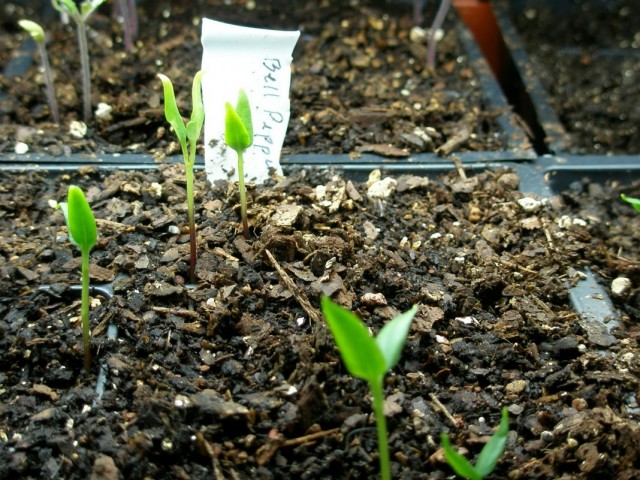 Uneven shoots of seeds sown on seedlings. © skeptical gardener
Uneven shoots of seeds sown on seedlings. © skeptical gardener
How to prevent?
It is necessary to carefully comply with all agrotechnical requirements for sowing seeds for seedlings.
If you are confused by the depth of seed placement, you can navigate by the following feature: the seeds are buried to the height of the seed, or no more than two of its diameters.
It is very important for obtaining friendly shoots of seedlings to observe the uniformity of seed placement. Tomatoes, bell and bitter peppers, eggplants close up to a depth of no more than 1,0-1,5 cm.
Very small, dusty seeds (celery, parsley, lettuce) are mixed with fine sifted sand, powdered chalk and sown on the surface of the prepared substrate. Sowing from above is mulched with a thin layer of sand, humus, the same dry substrate in which the seeds were sown.
A quality substrate for sowing seeds for seedlings must be taken care of in advance. It is more practical for beginners to buy ready-made soil for seedlings in a store. Having some experience, prepare on your own, according to the recommendations, a soil mixture that is light, water- and breathable, containing humus, and fertilized with mineral fertilizers.
In order for the seeds to form friendly, timely shoots, it is necessary to water the soil well before sowing, excess water must drain into the trays. After watering, give a couple of days of sediment so that the soil can mature and warm up to + 18 … + 20 ° С. Ripened soil should not be wet, but damp. It is easy to crumble when forming seeding grooves. The air temperature for the appearance of friendly seedlings should be +20 … +25 ° С, and immediately after mass shoots it must be reduced to +16 … +18 ° С. After sowing, before germination, it is better not to water the soil, but to spray it so that a soil crust does not form.
If the measures taken have not solved the problems with obtaining timely friendly seedling shoots, and all the deadlines have passed, then it is reasonable (especially if the seedling period is 4-8 days) to re-sow the seeds into another substrate, following all the necessary procedures.
3. Lodging seedlings
The next big problem after germination is seedling lodging. It would seem that everything is fine. Amicable dense shoots were obtained. We have already removed the film from the mini-greenhouses and rearranged the containers with seedlings to the window and … suddenly, the seedlings began to twist and lodging.
For what reason did this happen?
The reason may be the excess of the sowing rate. Sometimes (especially beginners), for complacency, they sow 1,5-2,0 seed norms. More often this technique is used when sowing large areas (seedlings for sale or for other needs). With good seed quality, friendly dense seedlings will begin to fight for lighting, moisture and nutrition, and weaker and stunted seedlings will crush. Seedlings will begin to develop unevenly. A taller and stronger one will bend towards more illumination (one-sided lodging).
 Lodging of seedlings. © Sauly
Lodging of seedlings. © Sauly
How to prevent?
Always sow seeds at the specified rate. You can exceed the seeding rate by no more than 5-10%. It is best to use sowing seeds in cassettes, peat pots or plastic cups. With this method of cultivation, the sowing density is easily observed and the seedlings are practically not affected by fungal and bacterial infections.
What to do?
With dense shoots of seedlings, pinching should be carried out immediately. Carefully, at the level of the soil, pinch off (without pulling out) weaker shoots. With row sowing, the distance between seedlings is 1,5-2,0 cm in a row, and with scattered sowing, approximately the same area around the perimeter. This technique will provide a greater influx of fresh air, improve lighting and nutrition for each seedling.
If sowing is carried out in separate pots or cups, then 2-3 seeds are sown and after germination, weak seedlings are removed (by pinching), leaving one of the most developed.
4. Pulling seedlings
Before germination, future seedlings do not need lighting, and therefore the crops are removed away from lighting, covered with opaque material. Sometimes, after germination, plants exposed to a lighted place begin to stretch strongly, the stems become thinner and fall to the ground.
For what reason did this happen?
The main reason may be the lack of lighting. In the struggle for the amount of light, one-sided stretching of seedlings begins. The lack of light can be associated with dirty window panes, increased watering, thickened seedlings. Thin stems bend towards the light. They do not stay upright, they lie down. During this period, the probability of disease of seedlings is high.
Another reason may be high air temperature and soil moisture.
Too frequent, abundant watering – the reason for the stretching of post-emergence sprouts.
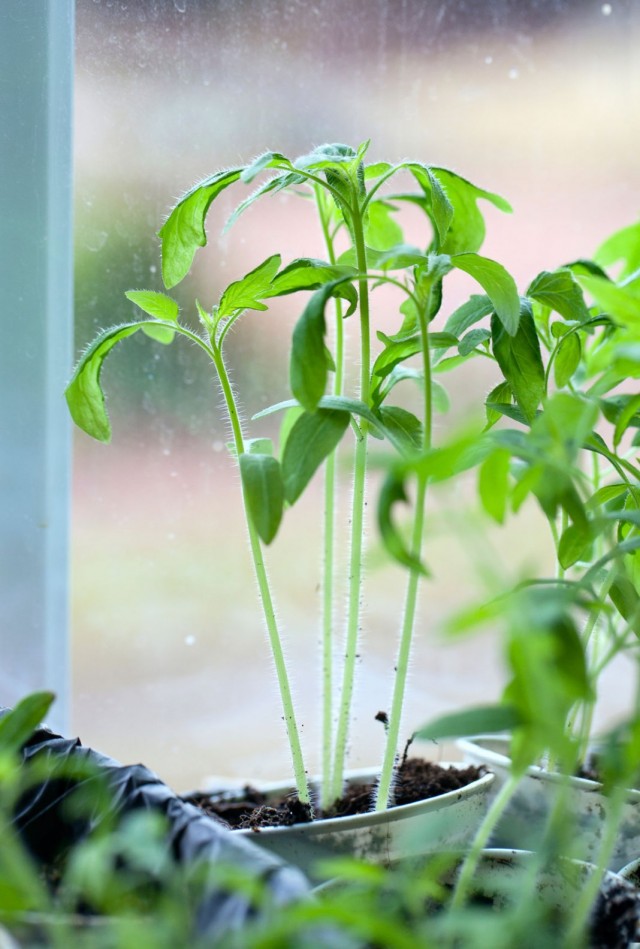 Pulling out tomato seedlings. © dianazh
Pulling out tomato seedlings. © dianazh
How to prevent?
To do this, after the first shoots (approximately in the first 3 days), the containers are transferred to the windowsills, closer to natural light. The best in this regard is the southern location of the windows. Window panes of greenhouses are pre-washed from dust and dirt. Install additional lighting.
The soil under the seedlings should be moderately moist. When watering the first 2 weeks, you need to protect the plants from water. Watering is best done before 12 noon. Water for irrigation should be heated up to +18…+20 °С. The sequence of watering is 1-2 times a week. The next watering is needed when a thin crust of dried soil forms. When grown at home, seedlings are watered along the edge of the container, in a greenhouse – along the furrows.
What to do?
For normal growth and development, seedlings need light for 12-14 hours a day. In February-March, the daylight hours are shorter and the brightness of the lighting is less. Plants receive only 50% of the required light. At low light intensity, plants are chlorotic, stretching and bending towards the light source.
For supplementary lighting, you can use phytolamps, fluorescent, LED lamps. Illumination of seedlings is usually carried out from 7 am to 20 pm. To enhance the brightness of artificial light when growing seedlings at home, you can install a reflective foil screen on the side of the window.
To stop pulling seedlings, it is necessary to reduce soil moisture. To do this, gently raise the fallen seedlings and dry the soil under them with dry fine sand (the best option). In the future, it is more practical to switch to watering through pallets and finely dispersed spraying of plants from a spray bottle.
Excessive humidity of air and soil contributes to the development of fungal diseases. In order for the seedlings to be healthy, not stretched, but to grow thick-stemmed, stocky, stable, it is necessary to maintain the optimal air humidity in the room at the level of 70-75%. To reduce the humidity of the air, the room is ventilated, but without drafts.
5. Withering and death of seedlings
Growing seedlings requires constant attention. All measures have been taken, the plants are green, fresh, the first real leaves have unfolded, and suddenly, both in large containers and in individual small ones, young plants began to wither, curl, and in some places small bald spots of dead seedlings appeared. Moreover, the number of dead plants is increasing.
For what reason did this happen?
Wilting is associated with the drying of the soil and a violation of the water balance of seedling leaves or a violation of the air-humidity regime of cultivation.
It is possible to overfeed plants with fertilizers.
The leaves not only wither, but also curl if aphids and other pests appear.
An increase in the number and the appearance of new foci of dead plants may indicate the defeat of diseases of a fungal and bacterial nature.
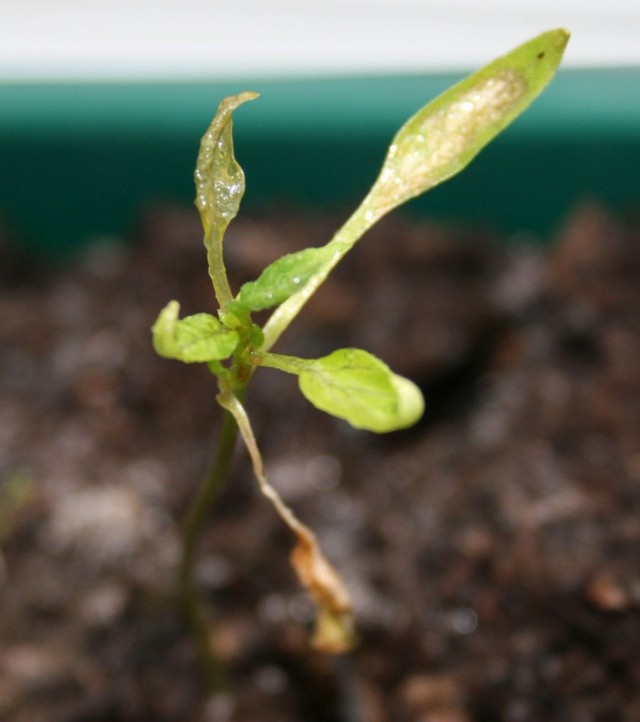 Wilting and death of seedlings. © Bradato Kopele
Wilting and death of seedlings. © Bradato Kopele
How to prevent?
Constantly check the state of soil moisture and follow the rules for watering plants. If a dry crust has formed on the surface and the soil under it is dry to the touch, it is necessary to take measures to normalize the irrigation regime.
Proper use of fertilizers for top dressing.
If plants wither when damaged by pests – aphids or mites. Constant monitoring is necessary to prevent the reproduction and dispersal of emerging pests. Seedlings need protective measures.
The death of single sprouts is not terrible, but the appearance of a large number of bald spots with dead plants and their death even when grown in separate pots and cups is a clear indication of the disease. Confirmation is a pinkish tint at the base of the stem, a black constriction at the root collar, and the soaked lower part of the seedling with mucus.
What to do?
With a lack of moisture, wilting begins with the lower leaves, which are slightly twisted with a funnel or boat. It is necessary to loosen the soil around the plants and pour a small norm of warm water. The main watering should be carried out through pallets. Spray the plants with a spray bottle and then carefully monitor and follow the requirements of the irrigation regime. It is possible that the seedlings are “hungry” if fertilizing was not carried out, and the soil mixture was not sufficiently fertilized before sowing. In this case, the plants need to be fed.
Recently, more and more gardeners are growing seedlings in cassettes. It is very comfortable. Seedlings do not require picking, they are provided with a feeding area, lighting, and the supply of a sufficient amount of oxygen to each plant. But, given the small capacity of the cassettes, seedlings of any crop need to be fed. Without top dressing, the plants stretch, turn pale, frail in appearance.
At the first stages of seedling formation, seedlings need nitrogen. You can prepare a nitrogen fertilizer from bird droppings. Mix bird droppings with water in a ratio of 1:2. After 2-3 days of fermentation, strain the infusion, dilute in 10 liters of water, water the soil under the plants.
During the hardening of seedlings, prepare an infusion of ash (1 tablespoon of ash per 2 liters of hot water). Insist for a day. Strain and water the soil under the plants. You can buy a ready-made preparation of microelements and sprinkle the plants during the formation of 3-4 leaves or a week after picking. Other mineral or organic fertilizers and compounds are also used for top dressing. The main thing is that feeding solutions should be of low concentration. Before fertilizing, the plants must be watered so that the young roots do not burn with a nutrient solution.
Carefully inspect the leaf blades of seedlings from above and below. Leaf curl may be a natural process of leaf blade growth and development. But if there are the smallest traces of white or reddish spots on the leaves, these may be traces of pests. Seedlings can be treated with tobacco or shag smoke (make censers).
You can use for processing the modern preparation Sharpei – a pyrethroid of contact-intestinal action against a wide range of pests of any age. After 1-2 hours, the pests die. On seedlings, one treatment is enough. If seedlings are grown at home, it is better to use bioinsecticides (they are harmless to humans and animals) – lepidocide, bitoxibacillin, fitoverm and others. Please note: Biologics are effective when used multiple times and as directed.
Focal death of seedlings and older seedlings is often associated with fungal diseases. If the plant is easily pulled out of the soil and in the area of the root neck, the lower part of the stem is visible constriction, rotting, the thinnest traces of mold, it is urgent to take protective measures. The disease can destroy seedlings in 1-2 days. If the disease has just begun to manifest itself in the form of the death of individual plants, it is necessary to transplant healthy seedlings into other containers, after once again disinfecting the soil with potassium permanganate, planriz, trichodermin, glyocladin.
If the plants fell ill in the first or second week after germination, it is better to resow in a new, more thoroughly disinfected soil mixture and regularly treat the plants with phytosporin, alirin, hamair, trichodermin and other biofungicides.
The article discusses only some of the most common problems in growing seedlings. There are many more of them, especially if the requirements of agricultural technology for growing seedlings are not met. A reminder will be a common truth – only careful preparatory work, prevention and fulfillment of all requirements for growing plants guarantee healthy seedlings.
